Around 1930, Ross seemed to be everywhere. Not only in Germany but also in many other European countries, film fans bought Ross star postcards to send them to their friends and their family or to collect them in an album. Ross started to produce postcards in Great Britain (Ross Verlag Foreign) and in France (Edition Ross). Film fans could collect all kinds of Ross cards, very small cigarette cards but also big cards in a XXL format. You also could find Ross cards in the magazine Das Programm von Heute. For this post, we selected 25 of our favourite Ross curiosities. In the next months, EFSP will continue this weekly Ross Verlag Tribute with posts on which we will focus on the series of these special postcards, cigarette cards or other collector cards.
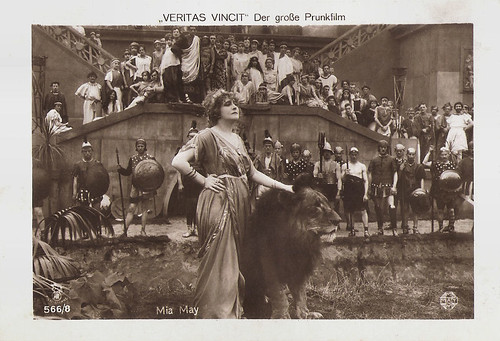
German postcard by Rotophot in the Film Sterne series, no. 566/8. Photo: May Film. Mia May in the first part of Veritas vincit (Joe May, 1919). Before he founded Ross Verlag in 1919, Heinrich Ross worked for Rotophot and its Film Sterne series. In fact, Film Sterne and Ross Verlag were part of the same series of cards, so the Ross Verlag numbering continued on from where Film Sterne ended. What can make it difficult to follow is that the portrait and film scene cards were seen as two separate series in the beginning. The Film Sterne film scene cards began at #500 and continued on until #568, and then the Ross Verlag name took on from there with the film scene cards until #700.
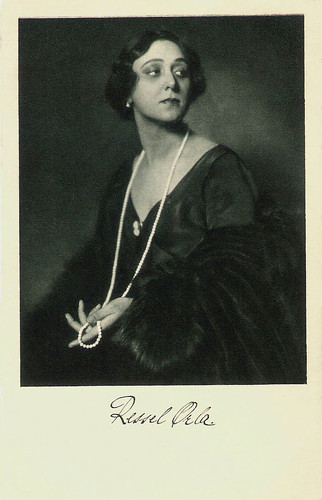
Ressel Orla. German postcard by Verlag W.J. Mörlins / Ross Verlag, Berlin, no. 9010/3. Photo: Karl Schenker. W.J. Mörlins was a German publishing company located in Berlin which operated in the early 1920s. Mörlins published autobiographies of the actors Bruno Kastner ('Von mir über mir', 1921) and Hella Moja ('Nie wieder in meinem Leben!', 1921), as well as deluxe albums of the four-part film Fridericus Rex (1921-1922). Mörlins also published four film star postcards series which were distributed by Ross Verlag. Remarkable is that master photographer Karl Schenker took all the pictures for the Mörlins cards.
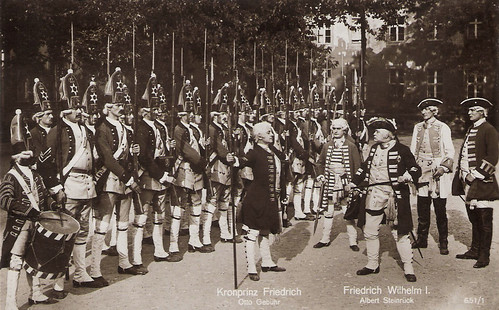
German postcard by W. Mörlins / Ross Verlag, no. 651/1. Photo: Karl Schenker. Otto Gebühr as crown prince Friedrich (Frederick, the future Frederick the Great), and Albert Steinrück as his father Friedrich Wilhelm I in the Fridericus Rex trilogy (Arzén von Cserépy, 1922-1923).
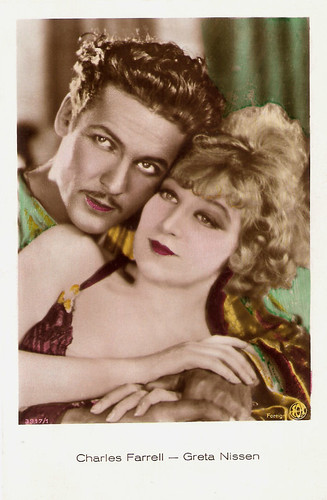
Greta Nissen and Charles Farrell. British postcard by Ross Verlag, no. 3917/1, 1928-1929. Photo: Fox. Publicity still for Fazil (Howard Hawks, 1928).
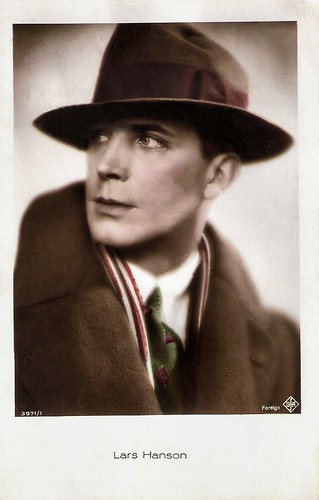
British Foreign postcard by Ross Verlag, no. 3971/1, 1928-1929. Photo: Ufa. Lars Hanson.
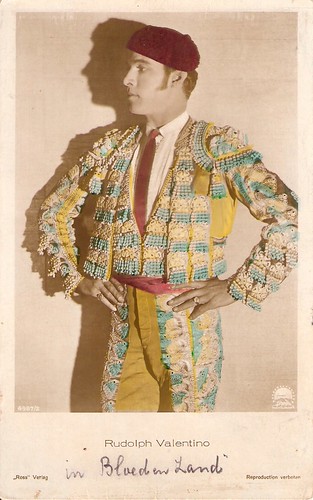
German postcard by Ross Verlag in colour, no. 4987/2, 1929-1930. Photo: Paramount. Rudolph Valentino in Blood and Sand (Fred Niblo, 1922).
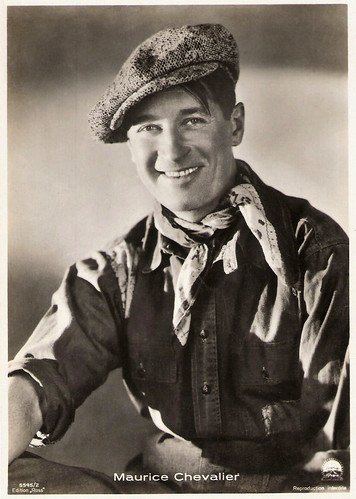
French postcard by Edition Ross, no. 5545/2. Photo: Paramount. Maurice Chevalier appeared as Apache in three acts of Paramount on Parade (1930), filmed by numerous directors including Ernst Lubitsch.

French postcard by Edition Ross, no. 5597/1, 1930-1931. Photo: Metro-Goldwyn-Mayer. Greta Garbo in Anna Christie (Clarence Brown, 1930).
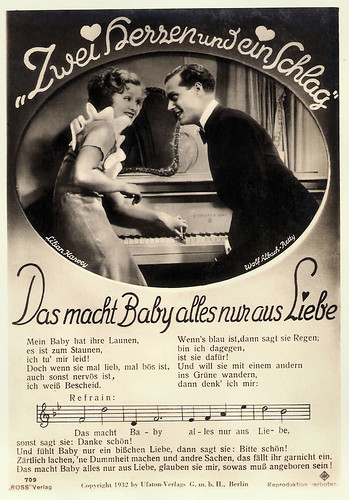
German postcard by Ross Verlag, no. 709. Photo: Ufa. Lilian Harvey and Wolf Albach-Retty in Zwei Herzen und ein Schlag/Two Hearts Beat as One (Wilhelm Thiele, 1932). Collection: Geoffrey Donaldson Institute. Both in Germany and France, many postcards quoted the songs of early film musicals. These were very important for the establishment of the new sound cinema.
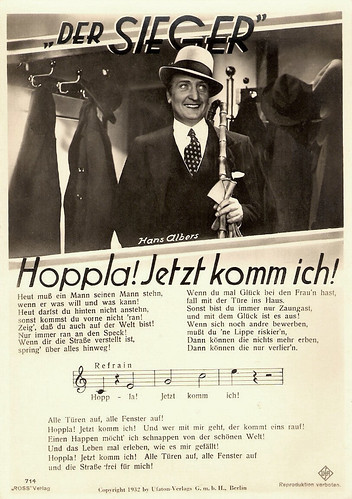
German postcard by Ross Verlag, no. 714, 1932. Photo: Ufa. 'Hoppla! Jetzt komm ich' was a song from the comedy film Der Sieger/The Winner (Hans Hinrich, Paul Martin, 1932) with Hans Albers.
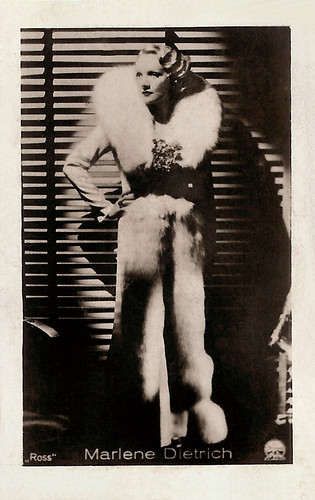
German collectors card by Ross Verlag. Photo: Paramount. Marlene Dietrich.
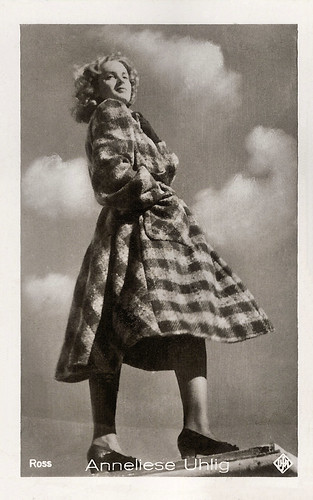
Small German collectors card by Ross. Photo: Ufa. Anneliese Uhlig.

German collectors card by Ross Verlag for the album Vom Werden deutscher Filmkunst. Teil I. Der stumme Film (Cigaretten-Bilderdienst Altona-Bahrenfeld 1935). Lil Dagover and Carl de Vogt in Die Spinnen/The Spiders (Fritz Lang, 1919).
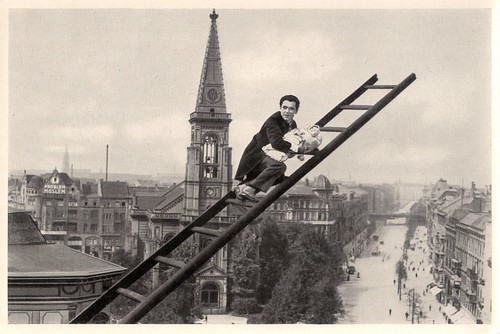
German collectors card by Ross Verlag for the album Vom Werden deutscher Filmkunst. Teil I. Der stumme Film (Cigaretten-Bilderdienst Altona-Bahrenfeld 1935). Luciano Albertini in Der Mann auf dem Kometen (Alfred Halm, 1925). The silent film was set in Berlin. This image combines two moments in the film. Towards the end of the film, Luciano uses a ladder to save a baby put on an old factory chimney pipe which is about to explode. The church is a typical example of Wilhelminian architecture, the site may be somewhere in the old Stadmitte of Berlin where most Albertini films were shot when filmed in Berlin. Problem Moslem refers to a cigarette brand.
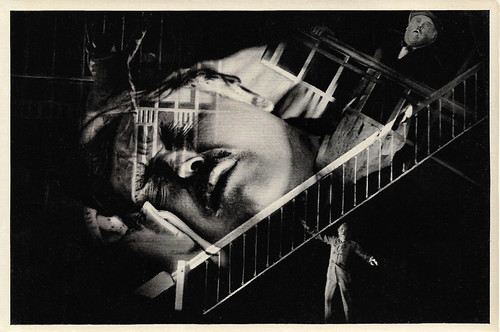
German collectors card by Ross Verlag for the album Vom Werden deutscher Filmkunst. Teil I. Der stumme Film (Cigaretten-Bilderdienst Altona-Bahrenfeld 1935). Photo: Ufa. Werner Krauss in the classic German film Geheimnisse einer Seele (G.W. Pabst, 1926).
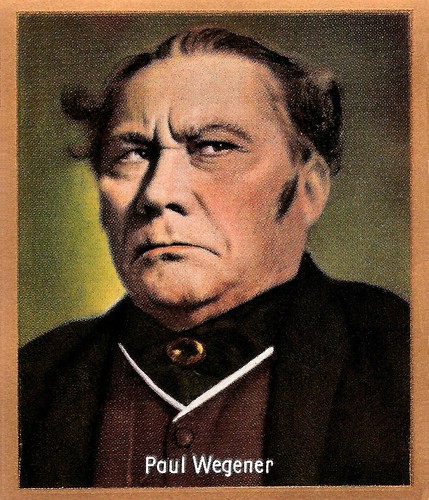
German cigarette card in the series Unsere Bunten Filmbilder by Ross Verlag for Cigarettenfabrik Josetti, Berlin, no. 193. Photo: Lilenberger. Paul Wegener.
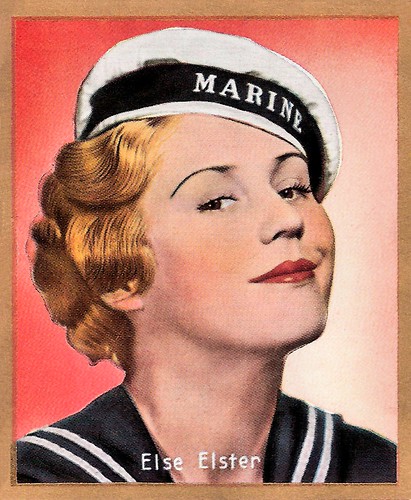
German cigarette card in the series Unsere Bunten Filmbilder by Ross Verlag for Cigarettenfabrik Josetti, Berlin, no. 153. Photo: Alex Binder. Else Elster.
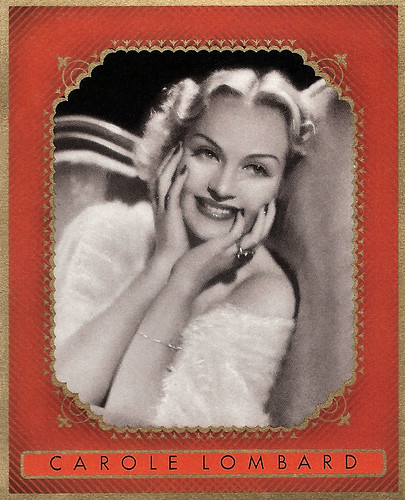
German collectors card in the Bunte Filmbilder series by Greilingen-Zigaretten, Series no. 2, no. 259. Photo: Paramount / Ross-Verlag. Carole Lombard.
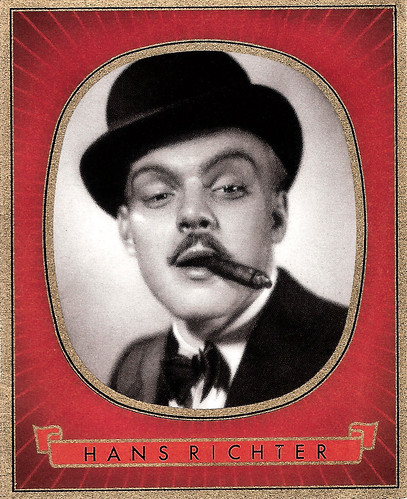
German collectors card in the Bunte Filmbilder series by Drama Zigaretten, Series no. 2, no. 459. Photo: Cando-Film / Ross-Verlag. Hans Richter.
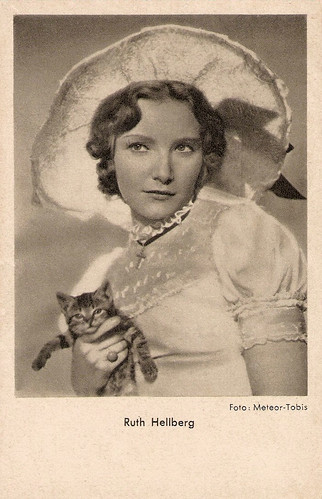
German postcard by Das Programm von Heute / Ross Verlag. Photo: Meteor / Tobis. Ruth Hellberg and kitten.
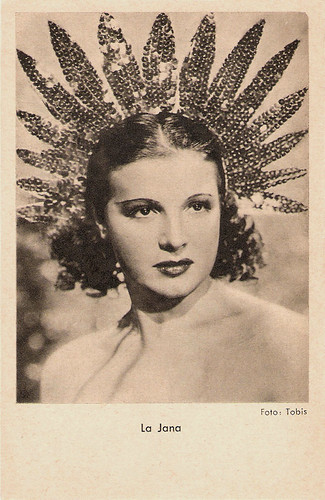
German postcard by Das Programm von Heute / Ross Verlag. Photo: Tobis. La Jana.
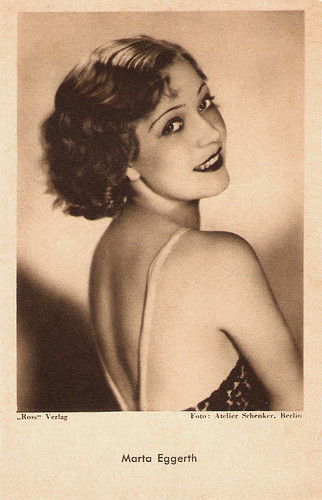
German postcard by Das Programm von Heute / Ross Verlag. Photo: Atelier Schenker, Berlin. Marta Eggerth.
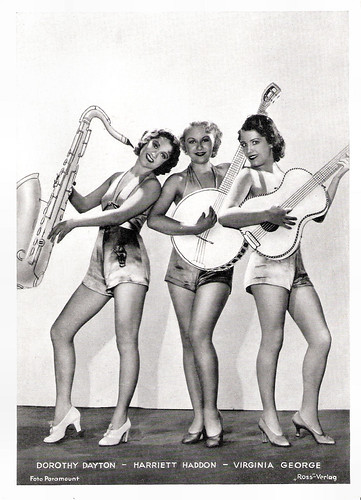
Big German card by Ross Verlag. Photo: Paramount. From left to right the American chorus girls Dorothy Dayton, Harriett Haddon and Virginia George. They all appeared - uncredited - in College Rhythm (Norman Taurog, 1934).
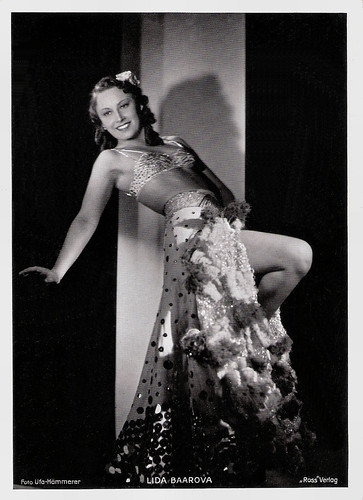
Big German postcard by Ross Verlag. Photo: Ufa / Hämmerer. Lida Baarova.

German presentation card by Film-Foto-Verlag, no. 874, series 1943/2. Hans Söhnker.
With thanks to Jean Ritsema and Ivo Blom! Our Ross Verlag Tribute will be continued next week and please, remember to check out the Ross Verlag Movie Stars Postcards website.

German postcard by Rotophot in the Film Sterne series, no. 566/8. Photo: May Film. Mia May in the first part of Veritas vincit (Joe May, 1919). Before he founded Ross Verlag in 1919, Heinrich Ross worked for Rotophot and its Film Sterne series. In fact, Film Sterne and Ross Verlag were part of the same series of cards, so the Ross Verlag numbering continued on from where Film Sterne ended. What can make it difficult to follow is that the portrait and film scene cards were seen as two separate series in the beginning. The Film Sterne film scene cards began at #500 and continued on until #568, and then the Ross Verlag name took on from there with the film scene cards until #700.

Ressel Orla. German postcard by Verlag W.J. Mörlins / Ross Verlag, Berlin, no. 9010/3. Photo: Karl Schenker. W.J. Mörlins was a German publishing company located in Berlin which operated in the early 1920s. Mörlins published autobiographies of the actors Bruno Kastner ('Von mir über mir', 1921) and Hella Moja ('Nie wieder in meinem Leben!', 1921), as well as deluxe albums of the four-part film Fridericus Rex (1921-1922). Mörlins also published four film star postcards series which were distributed by Ross Verlag. Remarkable is that master photographer Karl Schenker took all the pictures for the Mörlins cards.

German postcard by W. Mörlins / Ross Verlag, no. 651/1. Photo: Karl Schenker. Otto Gebühr as crown prince Friedrich (Frederick, the future Frederick the Great), and Albert Steinrück as his father Friedrich Wilhelm I in the Fridericus Rex trilogy (Arzén von Cserépy, 1922-1923).

Greta Nissen and Charles Farrell. British postcard by Ross Verlag, no. 3917/1, 1928-1929. Photo: Fox. Publicity still for Fazil (Howard Hawks, 1928).

British Foreign postcard by Ross Verlag, no. 3971/1, 1928-1929. Photo: Ufa. Lars Hanson.

German postcard by Ross Verlag in colour, no. 4987/2, 1929-1930. Photo: Paramount. Rudolph Valentino in Blood and Sand (Fred Niblo, 1922).

French postcard by Edition Ross, no. 5545/2. Photo: Paramount. Maurice Chevalier appeared as Apache in three acts of Paramount on Parade (1930), filmed by numerous directors including Ernst Lubitsch.

French postcard by Edition Ross, no. 5597/1, 1930-1931. Photo: Metro-Goldwyn-Mayer. Greta Garbo in Anna Christie (Clarence Brown, 1930).

German postcard by Ross Verlag, no. 709. Photo: Ufa. Lilian Harvey and Wolf Albach-Retty in Zwei Herzen und ein Schlag/Two Hearts Beat as One (Wilhelm Thiele, 1932). Collection: Geoffrey Donaldson Institute. Both in Germany and France, many postcards quoted the songs of early film musicals. These were very important for the establishment of the new sound cinema.

German postcard by Ross Verlag, no. 714, 1932. Photo: Ufa. 'Hoppla! Jetzt komm ich' was a song from the comedy film Der Sieger/The Winner (Hans Hinrich, Paul Martin, 1932) with Hans Albers.

German collectors card by Ross Verlag. Photo: Paramount. Marlene Dietrich.

Small German collectors card by Ross. Photo: Ufa. Anneliese Uhlig.

German collectors card by Ross Verlag for the album Vom Werden deutscher Filmkunst. Teil I. Der stumme Film (Cigaretten-Bilderdienst Altona-Bahrenfeld 1935). Lil Dagover and Carl de Vogt in Die Spinnen/The Spiders (Fritz Lang, 1919).

German collectors card by Ross Verlag for the album Vom Werden deutscher Filmkunst. Teil I. Der stumme Film (Cigaretten-Bilderdienst Altona-Bahrenfeld 1935). Luciano Albertini in Der Mann auf dem Kometen (Alfred Halm, 1925). The silent film was set in Berlin. This image combines two moments in the film. Towards the end of the film, Luciano uses a ladder to save a baby put on an old factory chimney pipe which is about to explode. The church is a typical example of Wilhelminian architecture, the site may be somewhere in the old Stadmitte of Berlin where most Albertini films were shot when filmed in Berlin. Problem Moslem refers to a cigarette brand.

German collectors card by Ross Verlag for the album Vom Werden deutscher Filmkunst. Teil I. Der stumme Film (Cigaretten-Bilderdienst Altona-Bahrenfeld 1935). Photo: Ufa. Werner Krauss in the classic German film Geheimnisse einer Seele (G.W. Pabst, 1926).

German cigarette card in the series Unsere Bunten Filmbilder by Ross Verlag for Cigarettenfabrik Josetti, Berlin, no. 193. Photo: Lilenberger. Paul Wegener.

German cigarette card in the series Unsere Bunten Filmbilder by Ross Verlag for Cigarettenfabrik Josetti, Berlin, no. 153. Photo: Alex Binder. Else Elster.

German collectors card in the Bunte Filmbilder series by Greilingen-Zigaretten, Series no. 2, no. 259. Photo: Paramount / Ross-Verlag. Carole Lombard.

German collectors card in the Bunte Filmbilder series by Drama Zigaretten, Series no. 2, no. 459. Photo: Cando-Film / Ross-Verlag. Hans Richter.

German postcard by Das Programm von Heute / Ross Verlag. Photo: Meteor / Tobis. Ruth Hellberg and kitten.

German postcard by Das Programm von Heute / Ross Verlag. Photo: Tobis. La Jana.

German postcard by Das Programm von Heute / Ross Verlag. Photo: Atelier Schenker, Berlin. Marta Eggerth.

Big German card by Ross Verlag. Photo: Paramount. From left to right the American chorus girls Dorothy Dayton, Harriett Haddon and Virginia George. They all appeared - uncredited - in College Rhythm (Norman Taurog, 1934).

Big German postcard by Ross Verlag. Photo: Ufa / Hämmerer. Lida Baarova.

German presentation card by Film-Foto-Verlag, no. 874, series 1943/2. Hans Söhnker.
With thanks to Jean Ritsema and Ivo Blom! Our Ross Verlag Tribute will be continued next week and please, remember to check out the Ross Verlag Movie Stars Postcards website.
No comments:
Post a Comment